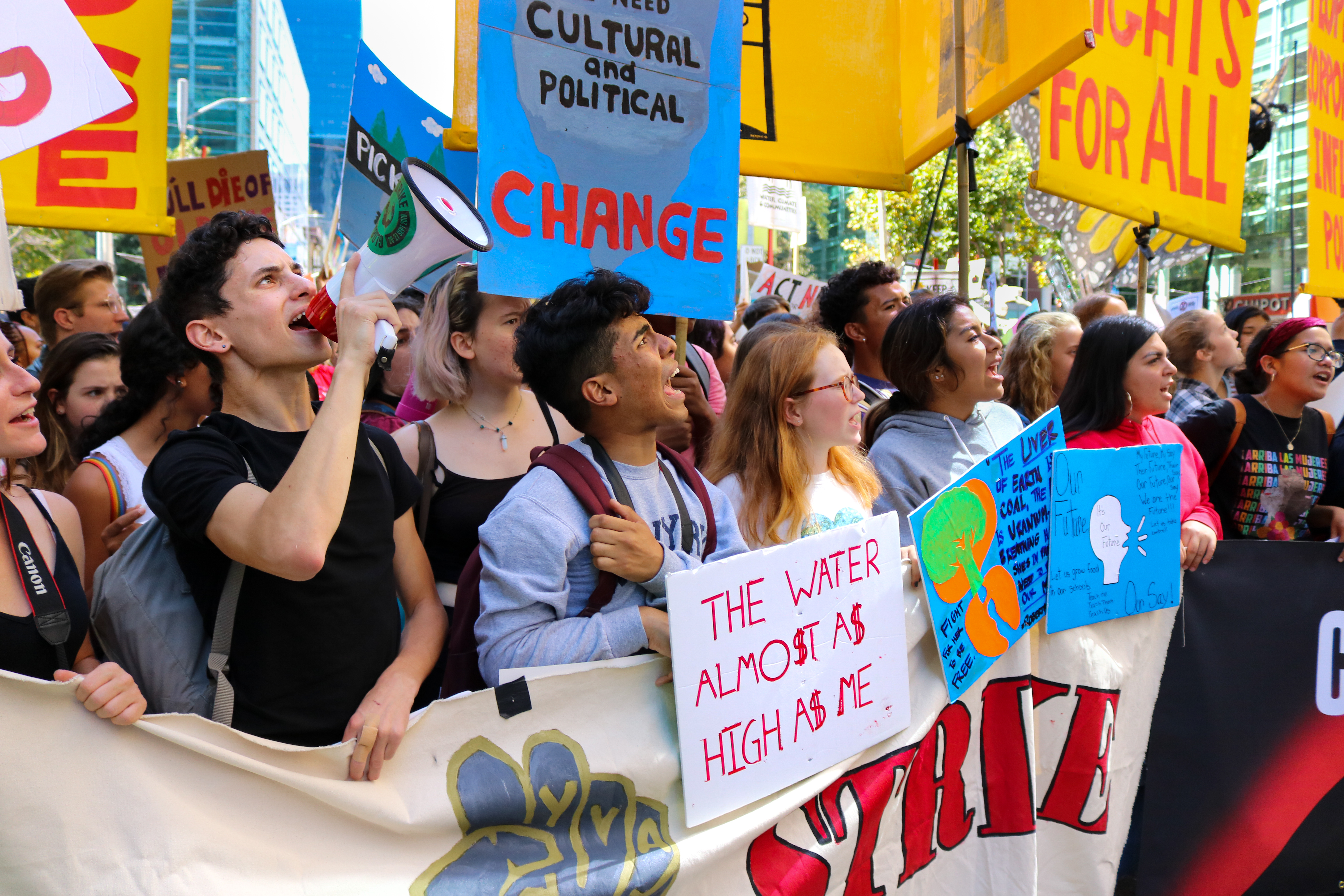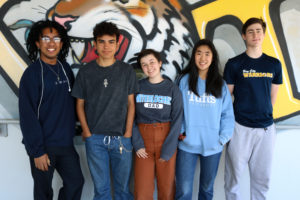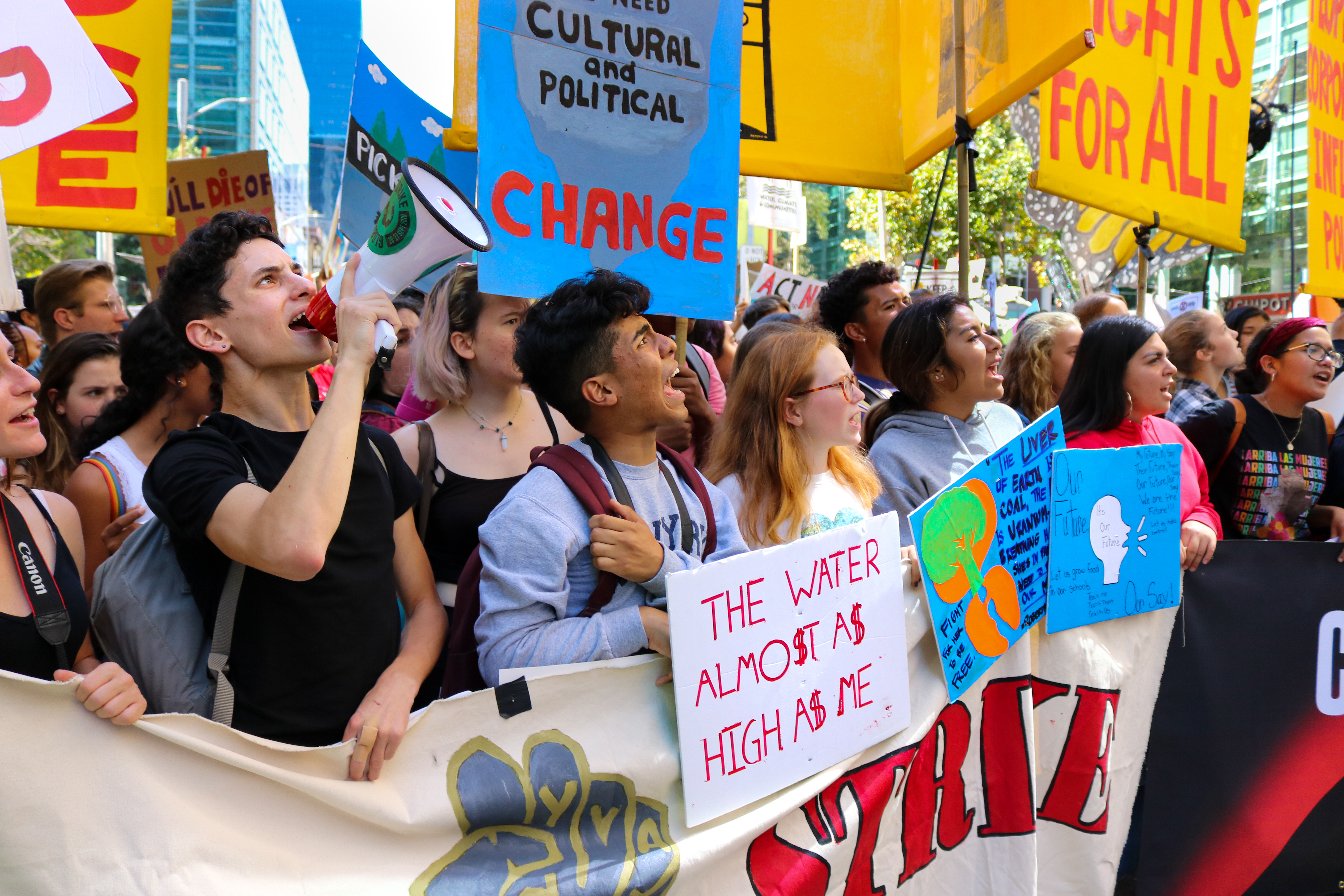
Photo by Gabe Castro-Root
Worried about the future of their planet, thousands of students from around the Bay Area took to the streets of downtown San Francisco on Friday, September 20th, to demand immediate action to combat climate change. They joined a community of young people and adults around the world who skipped school and work to call attention to the issue, protest government inaction and advocate for extensive solutions to what many activists call “the climate crisis.” Organizers estimated that around four million people participated worldwide.
The San Francisco strike, which had a turnout of around 8,000 people, was organized by youth leaders at the environmental activism groups Youth vs. Apocalypse and Extinction Rebellion. “Obviously we need to stop the effects of climate change as fast as we possibly can so we can have a livable world in the future,” said Baxter Bhansali, age 16, an organizer for Extinction Rebellion who was involved in planning the strike. “I think activism is one of the best ways to do that.”
By holding the protest as a strike from school, organizers said they hoped to send the message that the threat posed by climate change was so urgent that it required people to drop what they were doing to demand change, even if that meant cutting class. “If the social order is disrupted by our refusal to attend school, then the system is forced to face the climate crisis and enact change,” the Youth Climate Strike said on its website. Qiaoying Chen, age 15 and another Extinction Rebellion organizer, added that, “There’s something powerful about students choosing to leave campus to go march for a cause that will literally determine whether or not they have the future that they’re studying for.”

The protest was inspired by the 16-year-old Swedish activist Greta Thunberg, who has gained international recognition for her weekly “Fridays for Future” school strike, during which she sits outside Sweden’s parliament each Friday to draw attention to climate change.
At the San Francisco strike, several people held signs reading, “We are skipping our lessons to teach you one,” and, “I’m not showing up for school cause adults aren’t showing up for climate change.”
Adults who supported the strike said it was a chance for young people to learn about organizing a mass movement and to advocate for action on climate change in a way that previous generations have failed to do. Several educators also emphasized that taking part in a protest can be a valuable learning experience.
Don Rizzi, a biology teacher and chair of Lick-Wilmerding’s science department, said that he was fully in support of students taking a stand. “There’s a lot more that goes into education than sitting in a classroom, so I don’t see it as losing anything if a student didn’t show up in my class because they were advocating for change,” he said.
John Parodi, who leads an environmental education program at Point Blue Conservation Science, agreed. “The mobilization of all these students is incredibly inspiring and powerful,” Parodi said. He hopes the protests will inspire more adults to take the threat of climate change seriously.
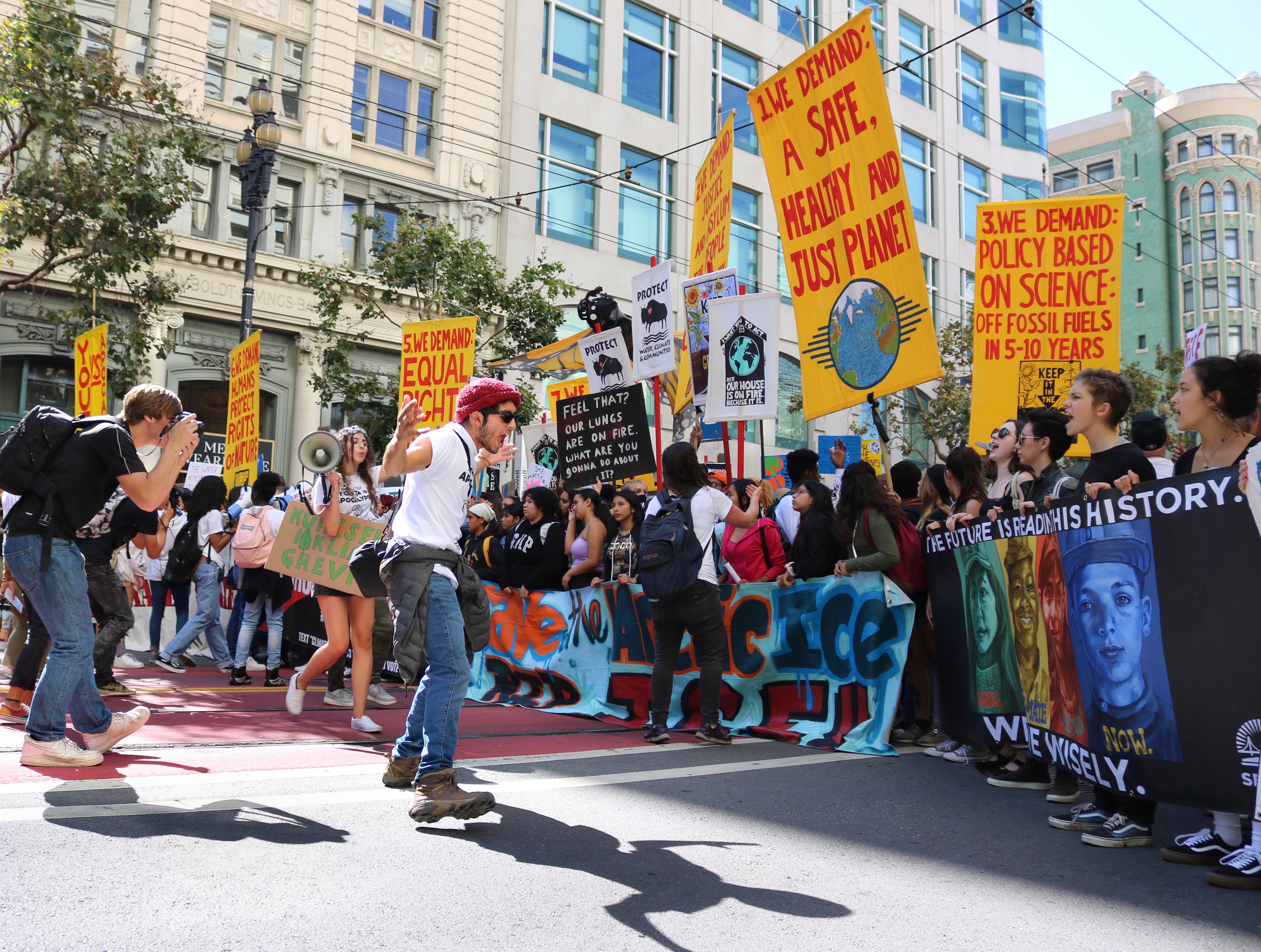
Protesters at the San Francisco strike made a point of emphasizing the intersectionality of climate change and other issues, including racial inequality and immigration.
“Environmental Justice is a Racial Justice Issue,” one poster declared. When the
march stopped outside Immigration and Customs Enforcement’s offices, a group of students held up a banner reading, “Save the Arctic Ice, RIP I.C.E.!!”
Another read, “What do vaginas and climate change have in common? Rich old white men are afraid to talk about them.”

Photo by Gabe Castro-Root
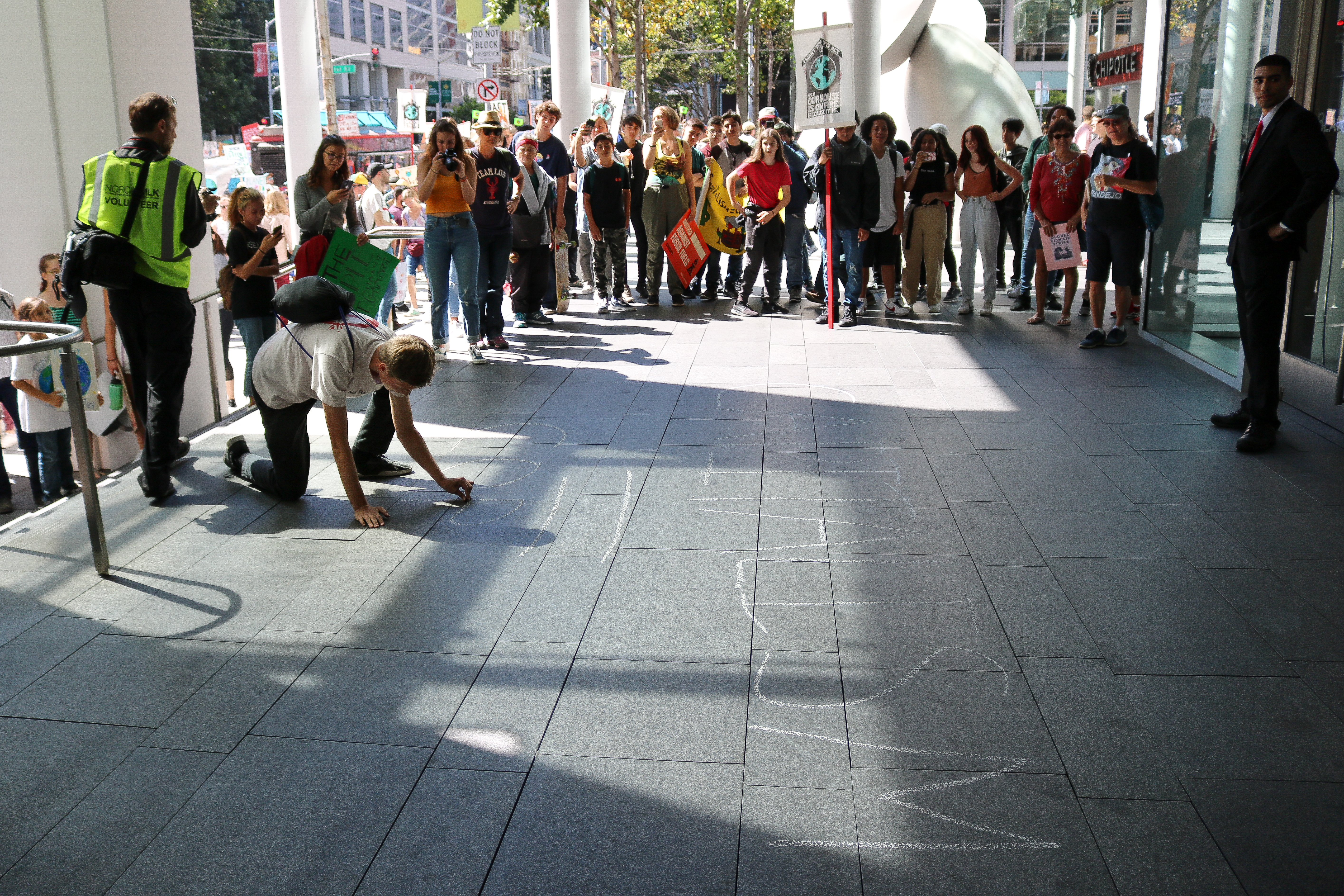
Photo by Gabe Castro-Root
Under President Donald Trump, the United States is currently rolling back several of the most significant environmental protections put in place in the last half century. The week of the school strike, President Trump announced that his administration was revoking California’s authority to set its own vehicle emissions standards, which are stricter than those set by the federal government. “It’s very unlikely that, as long as Trump is in the White House, we’ll be able to get much done on a national scale,” said Jonathan Palash- Mizner, age 17, the co-coordinator of the national Extinction Rebellion Youth organization. He said that for now, change would be more likely to come at the local and state levels.
Many protesters shared this view and chose to target politicians who have been supportive of the environmental movement, encouraging them to do more in response to climate change.
As the San Francisco strike moved north on Market Street, leaders halted the procession outside the office of Senator Dianne Feinstein.
Protesters chanted, “Dianne Feinstein, listen to us! We are the people, you work for us!”
In a video that went viral in February, the Democratic senator was confronted by youth activists about her lack of support for the Green New Deal.
In recent years, the Bay Area has experienced many of the effects of climate change that are projected to become more common as global temperatures rise, including drought, flooding and wildfires.
The immediacy of the threat is something that Chen said has been underemphasized in the environmental movement. “I think it’s important that people understand that climate change is not something that’s going to happen in eleven years or ten years. It’s happening now, and it’s happening in the Bay Area,” she said.
This sense of urgency was on full display at the San Francisco strike. “This is an issue created by generations before us but it’s our job to be part of the change,” said Teresa Topete ’21, who participated in the strike.
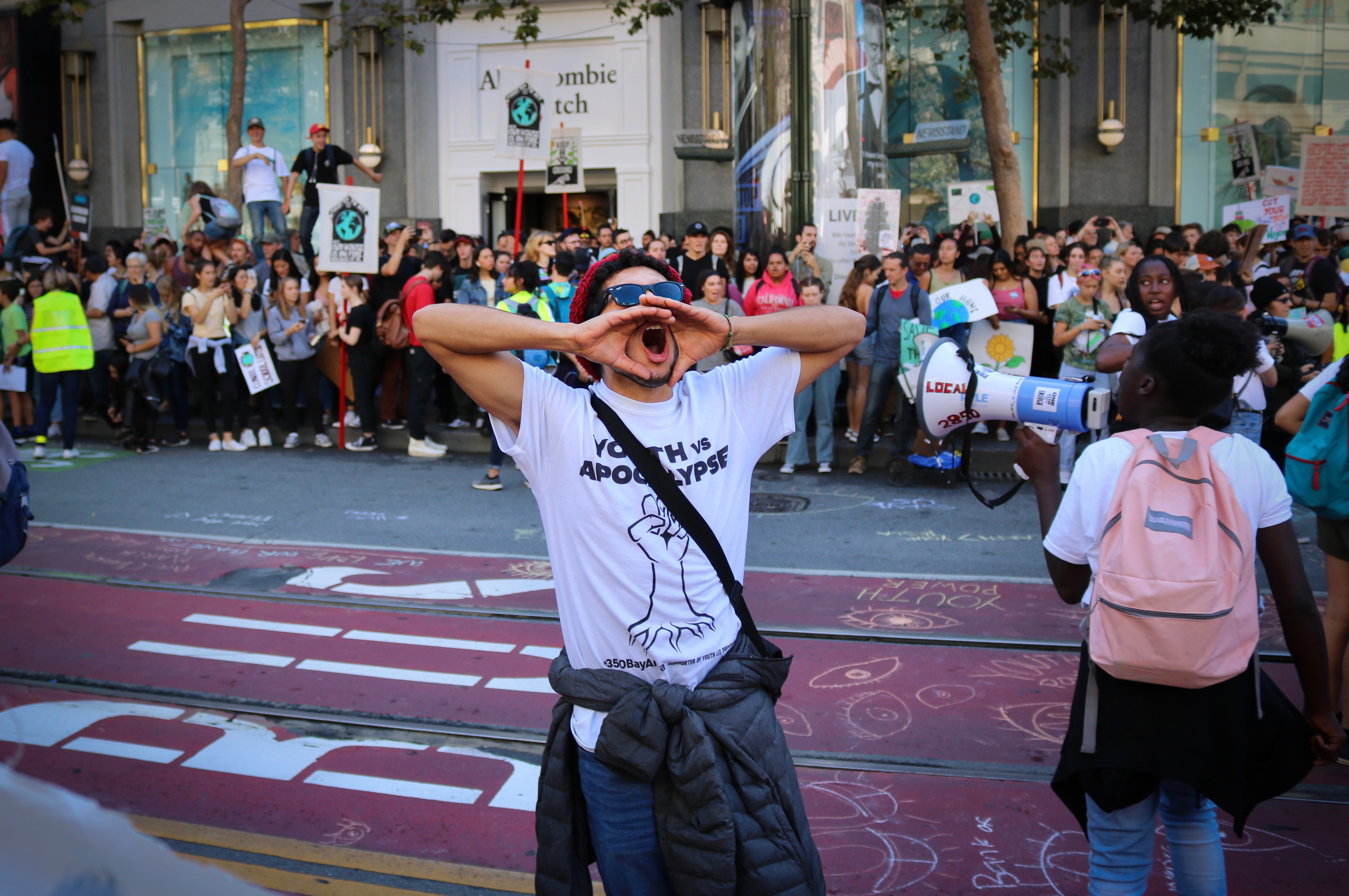
Photo by Gabe Castro-Root
The day began with a rally outside the Federal Building, where House Speaker Nancy Pelosi has her San Francisco office.
Protesters, who filled several blocks, then marched up Market Street towards the Embarcadero, stopping to protest outside the offices of major corporations including Bank of America, PG&E and the financial group BlackRock.
At each of these locations, protesters used chalk to draw eyes on the ground, symbolizing youth keeping watch over politicians and corporations with major influence over environmental policy.

Photo by Gabe Castro-Root
The strikes took place in over 800 locations in the United States and in at least 150 countries around the world. None happened in China, currently the world’s largest polluter.
In London, where over 100,000 people turned out for the strike, “There was an incredible energy,” said Sarah Levy, a high school student who participated there. “The atmosphere was really positive.”
In Islamabad, Pakistan, protesters “wanted the government of Pakistan to know that we are fully aware of what their negligence is doing to the planet and our country,” said Iman Najeeb, age 22, who attended the strike there. “I was humbled by the experience and felt such a huge sense of responsibility and accomplishment all at once.” Pakistan is one of the ten countries most vulnerable to the effects of climate change, according to the climate policy group Germanwatch.
In New York City, the largest strike in the United States, “It was very overwhelming, but it was great,” said Palash-Mizner. “It was an amazing experience.”
New York City public school students were excused from class to attend the strike. San Francisco students were not.
Estimates of how many people took part in the New York strike varied widely. Mayor Bill de Blasio’s office put the number at 60,000, while organizers claimed as many as 315,000 people participated.
Either way, “They blew that permit away,” Palash-Mizner said. “The police were like, ‘You’re only going to have five to ten thousand people,’ and only gave them a permit for that.”
That, he said, was one of the essential lessons for adults to take away from the strike. “I don’t think that they’re taking us seriously right now. I don’t think they believe that we’re here to stay and we’re serious that we have the support that we do.” He added, “This is going to keep getting bigger and bigger.”
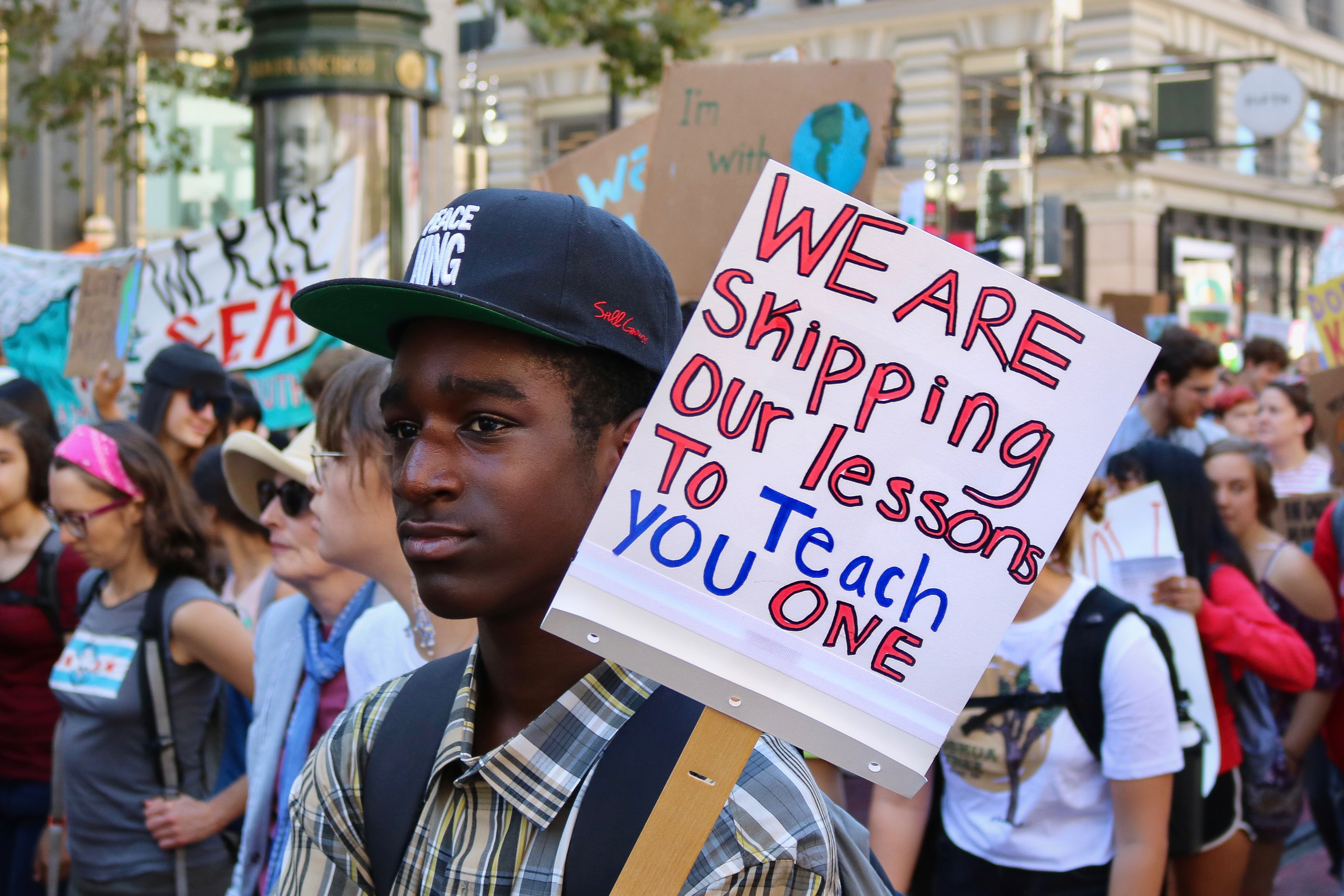
The strike occurred three days before the United Nations Climate Action Summit in New York, and protesters had a clear message for participating politicians. “The message we’re trying to send is ‘Get your shit together,’” Palash-Mizner said. “By and large our world leaders have neglected us and sacrificed our futures for profit, and that’s disgusting.”
At the UN summit, Thunberg’s blunt words drew widespread attention. She told leaders: “For more than 30 years, the science has been crystal clear. How dare you continue to look away and come here saying that you’re doing enough, when the politics and solutions needed are still nowhere in sight.”
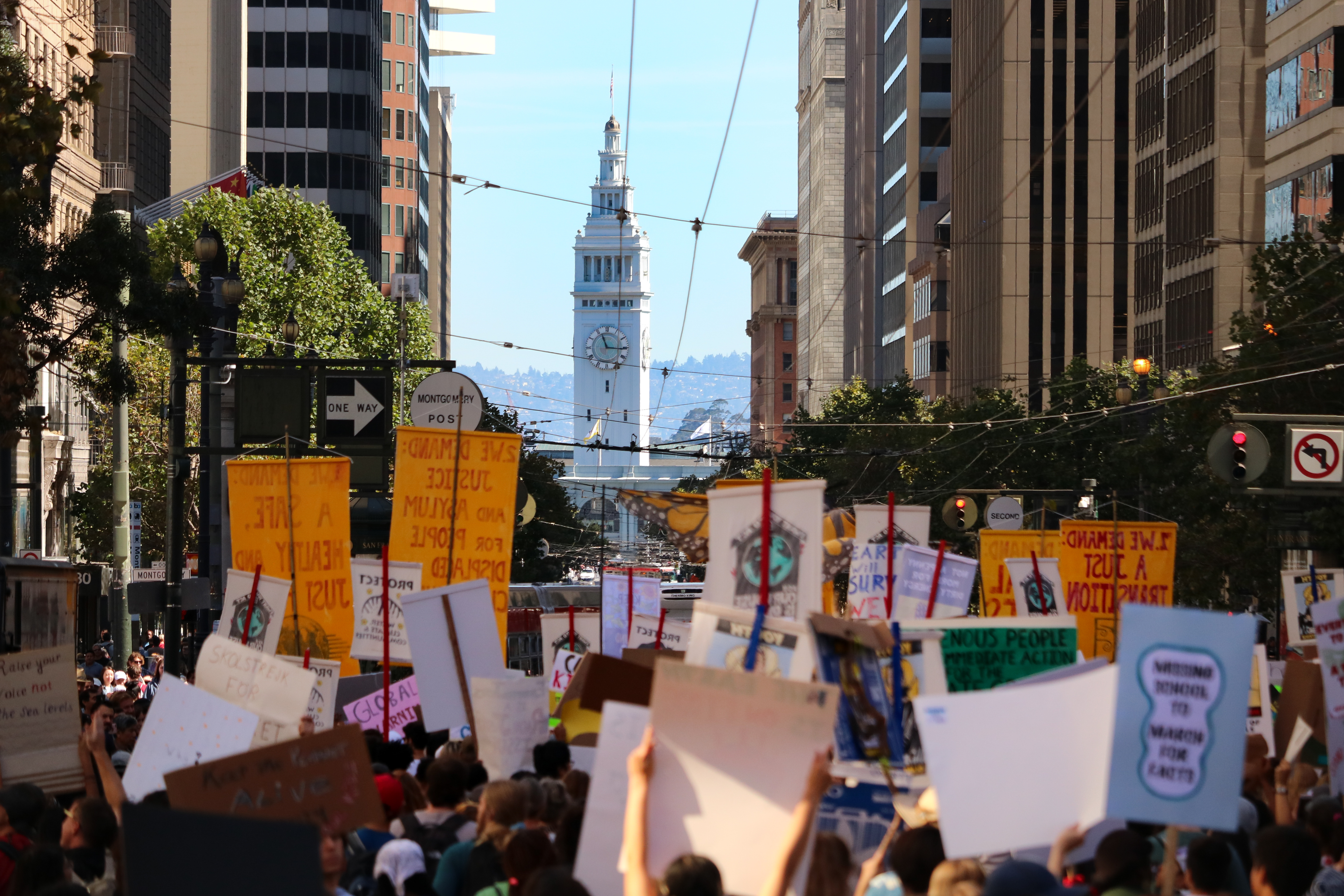
Photo by Gabe Castro-Root
Since the modern climate movement began in the 1970s, environmental activist spaces have often been dominated by white, often wealthy liberals. Several studies have shown, however, that people of lower socioeconomic class and people of color are far more likely to be directly impacted by climate change. Organizers of the school strike said they recognized that the movement needs to become more inclusive, and aimed to raise up voices that had previously been sidelined. “The fact is that there have been indigenous people and people of color fighting for our earth for decades and decades and being completely shut down,” Palash-Mizner said.
Najeeb noted that in Pakistan, “the transgender community often stays away from strikes because of the fear of public harassment and humiliation, however there was a large representation of the trans community who raised their voice for climate action” at the Islamabad strike.
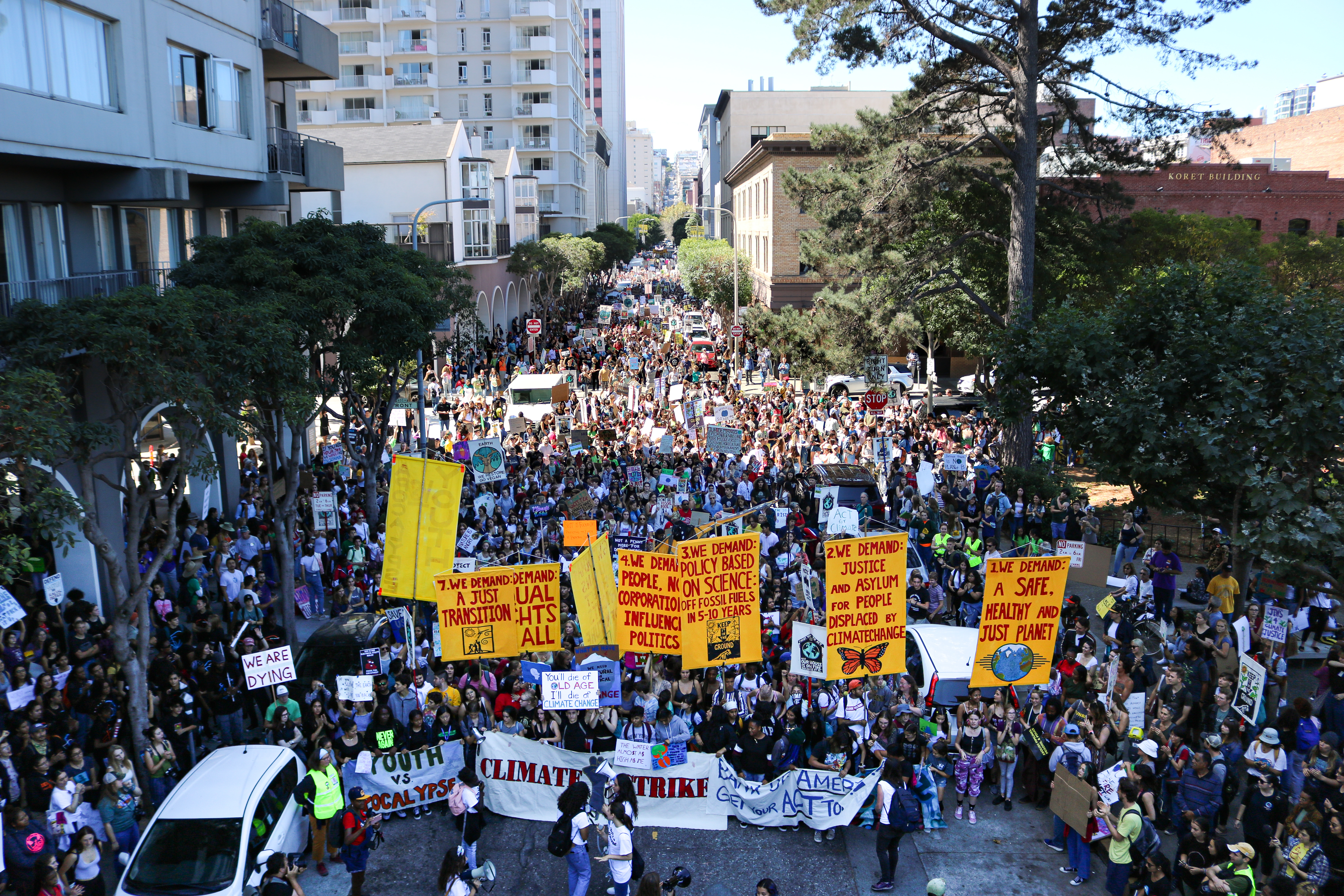
Photo by Gabe Castro-Root
The school strike was the kickoff of a week of worldwide environmental activism planned and executed by teenagers. But as that week came and went, the debate continued about whether a school strike was really the most effective way to create change, even among organizers. “I don’t think it will cause many of our politicians to change their views all of a sudden,” Bhansali said of the strikes, “but what I think it does do is it raises awareness and makes it clear that [climate change] is an important issue.”
Nick Wilsey ’21, who did not attend the strike, said it was “effective at bringing up the issue and starting a conversation, however it’s not the means through which we will achieve solutions. I think a more effective model would be advocating for specific [policy] changes.”
Palash-Mizner said he recognized that that was a weak point in the movement. “But,” he said, “we’re kids. We’re not going to tell you that we know how to save the world, because, frankly, we don’t. But we do know that the world needs saving, and we know who does know how to save it, and those people are climate scientists.”

Photo by Gabe Castro-Root
Going forward, organizers hope to be able to turn the momentum of the strike into pressure strong enough to force politicians and corporations to take dramatic steps to reduce greenhouse gas emissions. They said that in between major actions such as school strikes, they plan to keep up the pressure by organizing boycotts and recruiting more people to join the movement. “That’s how we leverage our power as the people, how we leverage our democracy in order to make the people who are supposed to be representing us make the changes that we want,” Palash-Mizner said.
“And,” Bhansali added, “we’re going to be able to vote soon.”



